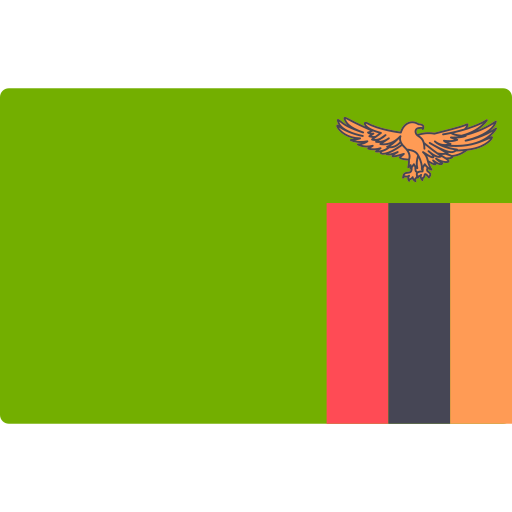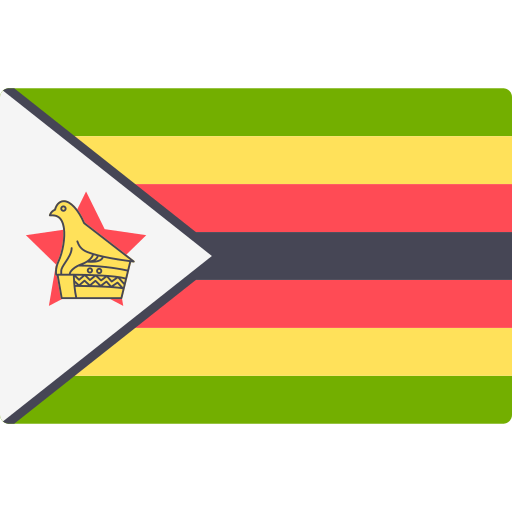In this in-depth sound design guide for A Sound Effect, they share their insights on the tools, techniques and tricks + the key elements you’ll want to consider when designing your next all-powerful sci-fi weapon sound:
In the world of cinematic sound, weapons have always been the driving force behind credibility and immersion. The latest AAA game titles offer an unprecedented, believable sonic experience, designed with great detail. While there is plenty of know-how for the sound design of real weapons, approaching non-existent guns is less straightforward.
As with any fictional object, devising its properties and character often relies on creativity and imagination. Therefore, this guide is focused towards the synthetic sound generation, outlines some of the proven and experimental approaches and describes the subjective workflow for designing futuristic weapons.
THE APPROACH:
The structure for designing almost any real gun can be summed up in the following main parts:
• Body – actual gunshot
• Mechanics layer — magazine, safety switch, scope, trigger and bolt action sounds
• Bass (Punch) — low-frequency layer to enhance a weapon
Despite seeming limited for our subject, such structure provides a good backbone for designing any futuristic gun. However, it can be expanded to a much wider list of possible elements to accommodate better realism and uniqueness.
Possible elements of a sci-fi weapon:
• Activation sensors (safety on/off) — scanning sounds, confirmation or denial sounds
• Retracting/unfolding sounds — metallic clicks, servos, electronic sounds
• Intelligent aiming system — scanning enemies through a visor/scope, zoom sounds, laser aiming
• Charging – often used for big, slow-firing guns
• Energy discharge — this is one of the key elements in a weapon. It can be any matter or a heavy projectile, depending on a concept, but the possibilities are truly endless. Dark matter, antigravity, electromagnetic discharge, electricity, fire, liquid nitrogen, cold plasma, slicing beams and many more
• Heat management — sounds of overheating, overloading upon discharge, failure
• Rotating barrels — speeding up, slowing down
As can be seen, the list of things to include in your gun design is vast, without even mentioning “otherworldly” and organic weapons. The time of the canonic “pew pew” laser sounds is long over, and it means that technically we are no longer constrained by the “pitched sine wave” model. The body layer can be designed to sound any way you like, as long as it is interesting and understood as a gunshot. Let’s take a closer look at some of the techniques:
RECORDING SOUND SOURCES:
Gunshots:
Recording fireworks, petards, starter gun, balloon pops and anything alike can yield good sources for creating convincing gunshots if you don’t have access to real firearms. Striking a suspended wire under tension with metallic objects and playing with slinky are some of the proven ways to source generic material for weapon’s layers. Furthermore, you can enhance your weapons with the recordings of fire, air and electricity bursts.
A simple and safe way to record electricity is to record a buzzing TRS cable (that sound of plugging your guitar into an amplifier). Processed with distortion, saturation, pitch and phase shifters the resulting sound can be impressive. Additionally, these recordings are fun to mash in a granular sampler. Another sound source can be the actual electricity. Our recent Lethal Energies sound library includes the recordings of a short-circuited 5000 V transformer.
Mechanics:
For the mechanical sounds, depending on a weapon size, almost everything that clicks or rattles is useful. Small things like plastic toys, battery cases opened and closed, mouse clicks, kitchenware, etc. To match a gun’s size, it can be bigger things such as metallic tubes and door handles. Recording motors and servos like a drill, sander, and electric toothbrush may suit for the automatic movements in a gun. Sounds of various pneumatics and hydraulics can also contribute to the design of gun mechanics. Recording various camera components may be used for weapon aiming/zoom sound effects
For punch sounds, you can simply record yourself hitting various objects such as a mattress or pillow, kicking doors and banging on different surfaces. The results may also be used for any bullet impacts.
Try to use close miking especially when recording foley and rid your recordings of any residual noise or unwanted pops and clicks with de-noising tools like iZotope RX.
Any recording will inevitably have some noise, and RX is simply magic at what it does to turn any bedroom recorded material into a studio-grade sound. Its batch processing is handy to prepare a lot of files in seconds. Be sure to record everything at the highest sample rate possible to allow for pitch manipulation at a later stage.
Weapon sound examples from Ruslan and Gleb’s Lethal Energies SFX library
SYNTHETIC SOUNDS:
Gunshot:
Synthesizing futuristic gunshots is where fun and magic happens. As soon as you have an image of how you would like your gun to sound, start experimenting with synthesizers. The standard “laser” sound is simply a short exponential descend in pitch and can be done with just one oscillator and a pitch envelope.
As soon as you have an image of how you would like your gun to sound, start experimenting with synthesizers.
Modern synthesizers allow going far deeper than that, creating complex spectral movements that will be discussed in detail below.
The good candidates to choose for a sci-fi sound design are Wavetable and FM synthesizers (such as NI Massive/Absynth, Xfer Serum, and Waves Codex). Wavetable synthesis operates custom waveforms that are rich in timbres, therefore proving to be incredibly versatile and efficient in sci-fi sound design. Along with the traditional descending curve, the pitch can be set to go up or even in both directions sequentially, although the descending pitch envelope is good enough for a quick start.
Once you have set your AD or ADSR envelope and assigned it to an oscillator’s pitch, you can choose the waveform to taste, add more oscillators with similar pitch envelopes, and change oscillator blending modes until you get some interesting sounds. A good trick is to use the lowest frequencies of some waveforms, as sometimes they give unusual timbres and “pulses” to add in later. Having one oscillator in Formant mode, also gives a “zing” to any gun. Once I you are happy with the envelopes and waveforms and all oscillators are set, additional tones can be layered by using filters.
You can use the same envelope you created for the oscillators pitch to drive the cutoff frequency of the filters. Almost all filters can bring some “extra” to the design, though, subjectively Comb filter can achieve the most interesting results. Filter tip: most standard filters would produce a sine tone with their resonance set to maximum. Another good trick to add a bit of “future” to the sound is to set Frequency Shifter to 50% Wet and a little of frequency deviation. It acts as a subtle frequency modulation, but the difference is noticeable. Last but not least are the effects like chorus or flanger — they add some width and color to a gunshot, so it doesn’t sound too dry and flat.
Play with pitch envelopes, make ascending, descending shots (or combine both) with different waveforms, try frequency shifters and comb or notch filters and see where it leads you. With this simple scheme, you should get enough material to layer and combine later. FM synthesis is another decent tool for creating sci-fi weapon sounds, from detonation countdowns and power charging to gunshots.
The key here is to experiment with carriers, modulators, and their envelopes. Native Instruments Absynth offers a combination of wavetable and FM synthesis, plus an effects rack including granular delay and comb filter which makes it great for creating sci-fi gunshots and other weapon elements
Punch and bass:
You can further enhance your weapon sound by adding a short synthesized sound — something like a kick drum. A kick made of a pure sine wave with a fast descending pitch envelope that starts somewhere around 1 kHz and goes all the way down usually works well to support a gunshot in the low-frequency region. Of course, experimentation is the key. The recordings of mortars, cannons, and explosions as well as kick drums — all work well to make a gun punchy and thunderous.
Just remember to cut the unused or unwanted frequencies with an EQ above the bass region to make up space for other layers in the spectrum.
Charging:
The formula for a basic charging sound is to take a set of few oscillators with the chosen waves to go up with the envelope, then detune them into atonality. You can modulate the tone and add a pulse via amplitude or ring modulation and sweeten it all up with chorus, flanger or even a granulator. Charging sounds tend to have longer attack and shorter decay times, contrary to the gunshots.
Popular on A Sound Effect right now - article continues below:
-
33 %OFFEnds 1714687199
-
20 %OFFEnds 1714687199
-
20 %OFFEnds 1714514399
-
23 %OFF
Bleeps:
 As the category suggests, there are numerous ways to devise a “bleeping” layer for a weapon depending on the type of action it is supposed to convey. Some of the functions of inclusion are: triggering, arming/reloading, “out of ammo” sound, aiming, etc. Some of those actions can be sonified as a series of beeps with an increasing or decreasing periodicity, sequences with a pronounced rhythm (i.e., like morse code), and may vary in pitch and spectrum over time. In terms of sound generation, bleeps can be made of either pure waves like sine and square, wavetables or by modulating tones with other oscillators (FM, AM). Additionally, try adding granular delays, pitch shifters and stutters for more variation. If you’re feeling short of ideas, there are some noise generators like Reaktor’s Skrewel that may inspire you to create more distinct layers.
As the category suggests, there are numerous ways to devise a “bleeping” layer for a weapon depending on the type of action it is supposed to convey. Some of the functions of inclusion are: triggering, arming/reloading, “out of ammo” sound, aiming, etc. Some of those actions can be sonified as a series of beeps with an increasing or decreasing periodicity, sequences with a pronounced rhythm (i.e., like morse code), and may vary in pitch and spectrum over time. In terms of sound generation, bleeps can be made of either pure waves like sine and square, wavetables or by modulating tones with other oscillators (FM, AM). Additionally, try adding granular delays, pitch shifters and stutters for more variation. If you’re feeling short of ideas, there are some noise generators like Reaktor’s Skrewel that may inspire you to create more distinct layers.
Mines and grenades:
Generally, mines and grenades comprise of 3-4 phases. While mines have all four phase, grenades usually have the last two.
• Sensor activation and/or mechanical triggering — either electronic bleeps and sweeps or mechanical foley sounds such as ratchets and light impacts.
• Timer countdown — a phase aimed at signifying danger usually contains periodic beeps that may speed up towards the explosion point. Sometimes mixed with charging sounds.
• Detonation mechanism activation — can be a combination of foley and electronic sounds depending on the type of mine/grenade, but quite often contains metallic sounds.
• Explosion – often made with the samples of real explosions or custom recordings. As mentioned before, fireworks are a good source for explosion sounds. Other various energy-based weapons can as well incorporate synthetic textures.
Here’s a breakdown of the individual sound components that went into designing a futuristic weapon sound effect.
0:01 bleeping layer
0:04 charging layer
0:07 main gunshot (made in Massive + overdrive and eq on it)
0:10 same gunshot with a bit of explosion mixed in
0:13 mechanical layer – simple trigger
0:15 bass (punch) layer – made by vocoding the main gunshot with an explosion sound
0:18 punch – a kick drum
0:21 another bass layer – derivative of the first one
0:24 all layers together
0:30 all layers + explosion added to a gunshot
A sci-fi weapon sound design example – in layers
USEFUL PLUGINS:
Equalizers – when assembling your weapon design from layers, equalizers are essential to keep each part of a gun within the limited spectrum. For instance, if your “punch” layer has most of its content between 30 Hz and 600 Hz, it’s good to cut everything above that to prevent the unwanted frequencies from interfering in the mix. Doing so will improve the definition of each component, even in the noisiest gunshots. We find FabFilter Pro – Q2 to be the best tool for a transparent surgical equalization.
Compressors – another essential tool for weapon sound design. Any real gun sound is vastly dynamic, but to make loud sounds for a game or moving picture it needs to be compressed, so the initial burst and tail have less loudness difference. Works well for individual layers as well as the final sound.
Transient processors — sometimes the sound isn’t snappy enough and transient processors like SPL Transient Designer or Flux BitterSweet can sharpen it by dynamically adjusting the initial loudness and subsequent decay. Another slightly similar tool that may help with sharpness is Gate.
Explore these categories for source material to design from – and some ready-made sci-fi sound effects too:
Bass Enhancers – these are sometimes the magic bullets for achieving bassier and more cinematic weapons. Although they can bring muddiness in a mix and induce clipping, if automated correctly, can add more bass even when you thought there was none. Usually work well when dry/wet automation is written only for the first part of a gunshot, quickly going into dry on the sound’s tail. Waves Renaissance Bass can be a safe bet here.
Granulators (granular delay/granular sampler) — purely creative tools that are very popular amongst sound designers. Granulators help to bring some more “future” to the weapons and are good in creating nuances and intonations for bleeps, charging sounds and gunshots. If you ever find yourself stuck making several variations of a gunshot, try automating Granular Delays in different ways. Argotlunar is a great and simple plugin to discover the technique.
Frequency shifters may help in nuancing a range of elements, from servo motors and bleeps, to charging sounds and gunshots.
Tools and techniques for further experimentation:
Vocoding
Spectral synthesis (iZotope Iris, Metasynth, Alchemy)
Stretching, blurring etc. (PaulStretch, Michael Norris’ plugins)
• FabFilter mixing plugins
• Reaper DAW
• Native Instruments – Massive, Absynth, FM8, Reaktor
• Flux BitterSweet
• Waves Renaissance Bass
• SPL Transient Designer
• Argotlunar granular delay
MATCHING PHYSICAL APPEARANCE WITH THE RIGHT SOUNDS:
Matching weapon’s appearance is an important step to achieving realism in sound design. Try to imagine how a weapon would sound in real life: its power, type of energy, amount of mechanics and details, duration of charging and discharging. While matching weapon’s size keep the following rule of thumb in mind — bigger guns sound louder and boomier hence the sound would contain more low frequencies, probably with a sharper attack and longer decay. Smaller guns, on the other hand, tend to have shorter decays and less “oomph”.
You’ll find a few examples of a good weapon sound design in the video playlist below. Other games and films with great weapon SFX: Destiny, Killzone, Fear, Elysium, Edge of Tomorrow, Men in Black.
ADDING IT ALL UP:
At this stage, you probably have enough material to start assembling your weapon. It is practical to have a separate DAW session for each weapon — this helps with organization of your assets and preserves resources, thus, enabling to fully edit, automate and master multiple layers. It is important to experiment with the lengths of samples in layers, gaps in-between, volume automation, pitch envelopes, and effects.
Hints:
Sometimes placing two different punch sounds a little apart works well to create that “ka-boom” effect where the gunshot has a preceding very short punch followed by a punch that is synchronous with a gunshot. Think how the trigger works — usually it’s a two-step action where a trigger first pressed, then released with each movement producing a mechanical sound. Placing one click right before the gunshot and the other slightly after, is a simple way of imitating the action.
In reality, you will not hear a gun sounding exactly the same every time it fires. Try to make four to six variations of a gunshot by varying the pitch, adding new details or changing the timing and automating the effects. Tool-wise, any DAW will be suited for these processes, though with a varying degree of comfort. We find Reaper to be particularly suitable for the weapon design, with its export options, track categorization, and easily accessible pitch parameters.
While mixing, it is important to remember to place each component in its own frequency domain, cutting the unused frequencies with Low and High-Pass filters and EQs. Take frequent breaks at this stage, as listening fatigue may hinder your judgment. To sweeten the sounds a bit, you can try “colorizing” equalizers and saturators.
Next is dynamic processing. During this stage, the weapons are treated with compressors to improve an individual dynamic of the sounds and even out the loudness levels of all weapons. The key is to not squash the sounds too much, but give them a little more thickness. The limiter is the very last and essential point in a mastering chain, used to tame the sound peaks. Not all playback systems are sensitive enough to True Peaks yet, but to future-proof your practices, choose an ISLenabled Limiter such as FabFilter Pro-L which also keeps your output safe from the shortest of the peaks.
Whatever it is you design, if there are other objects that may be similar in appearance or concept, it is best to share some distinguishable sounds between them. For example, if you’ve designed gunshots for a plasma gun, don’t make plasma rounds for it sound like dark matter.
Similarly, if you have some guns AND grenades based on “electromagnetic shock”, they probably should have something in common. Try to keep all your individual components for reuse in any other weapon, because like in any other design discipline, cohesion and fluidity are fundamentally important principles that impact upon many sides of a finished work.
As we continuously advance our technologies, the days when some of the science fiction becomes reality get closer. At that time, designing futuristic weapons will probably be as essential as footsteps, and hopefully this guide contributes to the knowledge base.
Please share this:
from a myriad of independent sound creators, all covered by one license agreement
- a few highlights:
































































































































































































































































This is an amazing article! Very well done and full of incredible insight and info. I will be studying this and its techniques in depth…thanks so much for articles like these – truly indispensable.
Thanks a lot for the comment, Dale – so glad you’re finding it useful! And totally agree, Ruslan and Gleb did a stellar job with this guide. Really enjoyed going through this one too :)
Wow, phenomenal job with the article.
Can I ask you what you mean by vocoding two sounds together?
You mean morphing? Cross synthesis?
Can you provide an example of a commercial tool that will bring us there?
Best!
Thanks Andrea, glad you liked the article!
You got that right, cross synthesis essentially. I use Ableton Vocoder, sometimes a few factory Max patches, and a bunch of forgotten primordial tools like Mammut and SoundHack if you can find them. Fun to explore but inconsistent technique, though can push your designs further. My best bet would be the new Zynaptiq Morph plugin, but I haven’t tried that myself. I just know these guys have the best DSPs.
Feel free to ask anything else, I’ll try my best to clarify
Cheers!
Thanks for the quick reply,
I’m not a Live user, I guess I should really look into that. I always assumed it’s vocoder was a simple one, not a vocoder which allows the user to extract the spectral content of a sound and the amplitude content of another one.
I’ve been using Csound and SoundHack for quite some times, but for a second I thought you head dome real time, recallable plugin to do this kind of stuff. =)
Not familiar with Mammut but I’ll definitely check it out.
Morph sounds incredible, the closest I’ve seen to Kyma cross synthesis.
Thanks again for the thorough blog post and explanation!
@Andrea, I recently demoed Zynaptiq’s Morph 2 and compared it to Live’s Vocoder. There were moments where Morph 2 sounded better, but mostly I got better results using Live’s Vocoder. It is an extremely flexible tool and Live’s environment (pitch shifting/tempo matching algos, ease of routing and on board tools) provide a wealthy toolset for audio manipulation.
Forgot to mention… Fantastic article! I love the breakdown! Thank you for so thoroughly explaining!
Amazing article wish I’d have this a few months back I struggled greatly and this would of helped me structure a little more with creation.
though I have one question say your creating a more organic scifi weapon say something where the balance is more towards a gunshot rather than the synth, would you suggest getting the two elements (natural gun shot and synth shot) relative in pitch or timbre so that they kinda blend together better to become one individual sound ? any advice would be great
and again great article :)
Good question. Real gunshots, simply put, being the loud bursts of noise, are somewhat tricky to characterise in terms of pitch and timbre. Any perception could be quite subjective. Nonetheless, if any real gunshot has either more or less low frequencies (low-high ratio in noise), I’d think how my ‘synthetic’ layer could fit in the mix. For instance, by subduing high frequencies in real gunshot and placing synthesised sweep somewhere in the opened domain could help to achieve a more balanced weapon. And vice versa with thunderous pistol shot + bassy synth. Another way I can think of is by combining elements in time: for example, placing real shot first, then some synthetic tone that starts in the middle and goes little longer, leaving a tail. Or something synthetic a couple of miliseconds before the real sound. Just a couple of thoughts, hope it helps.
This article is just great, it is so well done and so interesting.
I spent a while and i got some really interesting sounds out of this!
i really would like to read so much more of this, could you advice me a book about sci-fi sound design using NI Massive or other NI synthesisers?
i would really appreciate it.
Thanks
and again thanks for such article.
So glad to hear you enjoyed it! Can’t think of any books off the top of my head, but check out these two guides on sci-fi sound design too: https://www.asoundeffect.com/sci-fi-ui-sound-effects/ and https://www.asoundeffect.com/stellar-spaceship-sound-effects/ (this one comes with patches for NI Massive too)